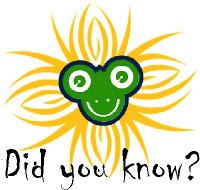
I spoke to the Bakersfield Cactus & Succulent Society on February 11, 2020, about nature’s geometry in succulents, and spoke on the same subject at the San Gabriel Valley Cactus & Succulent Society on February 13.
Bakersfield is a 4-hour drive from me, and the Los Angeles County Arboretum where San Gabriel Valley Cactus & Succulent Society meets, is a 3-hour drive, so it’s not like I was going to come home after Bakersfield and then drive back to Los Angeles through all that horrendous traffic.
Thus, I spent Wednesday out and about Bakersfield, exploring trains, zoos, arboretums and gardens, and the campus of California State University-Bakersfield.
Bakersfield has a zoo and arboretum by the name of California Living Museum, or CALM for short. It specializes in California native fauna and flora.
I have been a member of zoos, arboretums, aquariums, and animal sanctuaries since I was 13 when my wise old grandmother got me a membership to the Gladys Porter Zoo in Brownsville, Texas. After that it was the San Antonio Zoo and Houston Zoo.
I came to San Diego, California, in April 1993, and as soon as I decided to stay (took three days!), I immediately joined the San Diego Zoo, and I have been a member ever since.
The California Living Museum is only 14 acres with 250 animals representing 80 species. I could not find any information on the number of plant species.
Compare that to the San Diego Zoo at 99 acres, 3,700 animals, and 650 species. Compare both to the San Diego Zoo Safari Park at 1,800 acres, 3,500+ animals, and 400+ species. Consequently, I didn’t know quite what to expect. I really thought that it would take no more than 90 minutes or so to check out everything.
I was wrong!
It took four hours!
Seeing native California animals was great, especially those that I had not seen before, such as coyotes, various rattlesnakes, coatamundi (still don’t know what that is!), and the beautiful mountain lion (Puma concolor).
Although the San Diego Zoo has a mountain lion, it’s a lazy ass cat and always is sleeping in its cave whenever I go by. The one at CALM was perched on a rock watching the people who were watching it. I got my best picture ever of this beautiful big kitty:

Would you look at that tail!
I will have more pictures of this beautiful and impressive little zoo in future posts.
As an aside, I know I have readers who despise zoos and aquariums. All of the fauna at CALM are in three categories:
-
- Animals that are injured and unable to hunt or defend themselves, so they cannot be released back into the wild.
- Animals that have been rescued from the illegal pet trade. When animals are taken from their territory, returning them to a different territory usually means their death, either from not knowing where to hunt in their territory or being killed by other animals defending that territory. Since it is unknown where their territory was, they can’t be released back into the wild.
- Animals that have been imprinted. This sometimes happens when injured animals are rescued and treated for their injuries. One always hopes for their complete recovery and return to the wild, but sometimes the animal becomes too accustomed to humans providing for its food, health, and safety, a condition known as imprinting.
Without zoos, aquariums, and sanctuaries, these animals would probably be euthanized. Instead, they can live out their lives in comfort. There also is quite a lot of research indicating that people won’t (or can’t) spend the money and time to make a trip to the wild to see these animals, but to see them in zoos, aquariums, and sanctuaries often turns people into animal activists and conservationists. I also met one San Diego Zoo employee who told me that she visited the Zoo when she was 8 years old. She decided she wanted to work there one day. She got a degree in biology and has worked at the Zoo for 17 years.
























































 Fibonacci determined that the first pair of rabbits would have 377 pairs of rabbits, or 754 rabbits during the year (assuming no rabbit deaths!). If you’ve ever taken care of rabbits for an extended period of time, you know that 754 rabbits is a gross undervalue!
Fibonacci determined that the first pair of rabbits would have 377 pairs of rabbits, or 754 rabbits during the year (assuming no rabbit deaths!). If you’ve ever taken care of rabbits for an extended period of time, you know that 754 rabbits is a gross undervalue!
